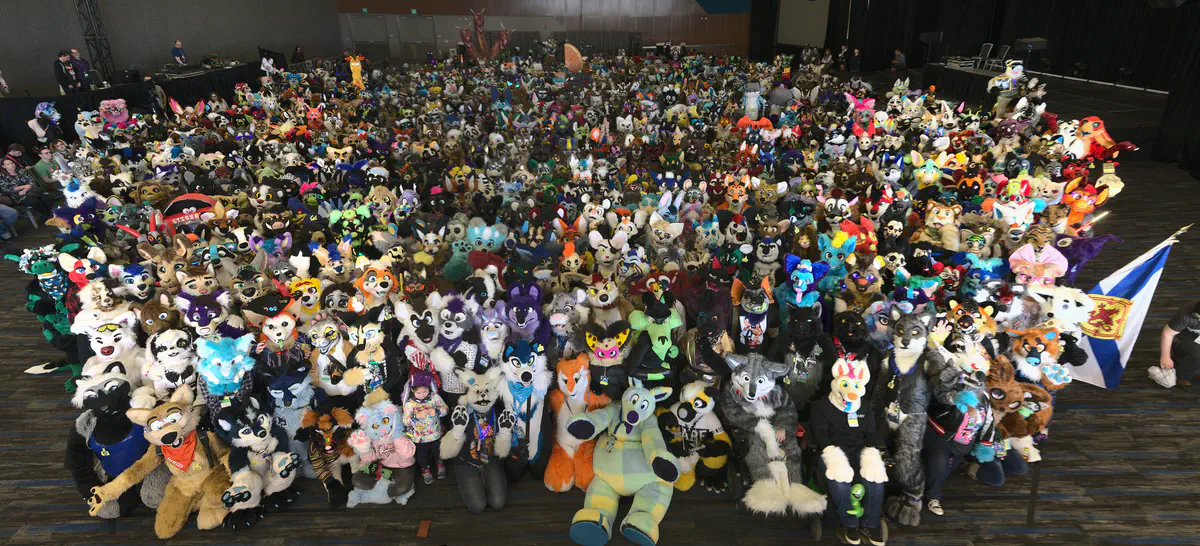About Further Confusion
 FC2020 Group Photo - 742 fursuits (Flickr/Warphammer)
FC2020 Group Photo - 742 fursuits (Flickr/Warphammer)Further Confusion is one of the largest international conventions celebrating anthropomorphism in all its guises. With an attendance of over 4,000 and growing, it is one of the premiere events of its kind. Further Confusion includes charitable benefits, educational seminars, art shows, panels and general social activities. It was the first event sponsored by Anthropomorphic Arts and Education Inc. and continues to be its largest.
“Furry” is a colloquial term used to describe a particular category of fictional animal. A Furry creature is anthropomorphic, where human and animal characteristics are both present. It can be physical, mental or both. They can be funny or serious. Usage of the term furry is limited almost exclusively to members of Furry Fandom or other cultural groups aware of furry fandom. The term Furry is also sometimes used to refer to fans of the anthropomorphic arts. Such arts range widely and include animators, illustrators, filmmakers, costume designers and performers, actors, voice talent, literary authors and songwriters.
Within the accepted usage of “furry”, Roger Rabbit, Bugs Bunny, and Mickey Mouse are “funny animals:” they are anthropomorphic, mostly behave like people, and can be considered the cartoon equivalent of character actors. On the other hand, Usagi Yojimbo, Omaha the Cat Dancer, and the original Teenage Mutant Ninja Turtles are furries (even though turtles don’t have fur). They are generally more “realistic” in appearance than the funny animals and behave more like crosses between humans and animals. They are sapient and just as much “people” as any fictional character, but they aren’t presented as animals for laughs.
For example, the rabbit characters in Richard Adams’ novel Watership Down are sentient and talk to each other, but their behavior and psychology is very closely derived from that observed in real-life rabbits. Other furries are not so closely tied to their animal sides, but there is always some degree of serious consideration given to it. Andre Norton’s Breed to Come, Brian Jacques’ Redwall series, and Steven Boyett’s The Architect of Sleep are other examples of novels featuring furries, as is Paul Kidd’s Fangs of K’aath, which has been cited as a source of inspiration for many people to create furry works.
Read more about the furry fandom here.




